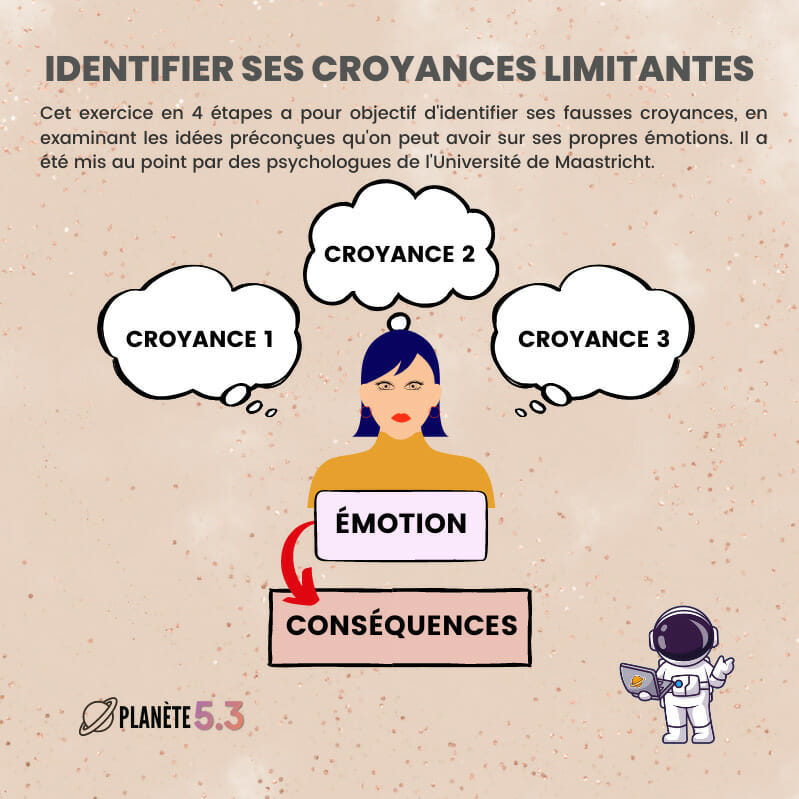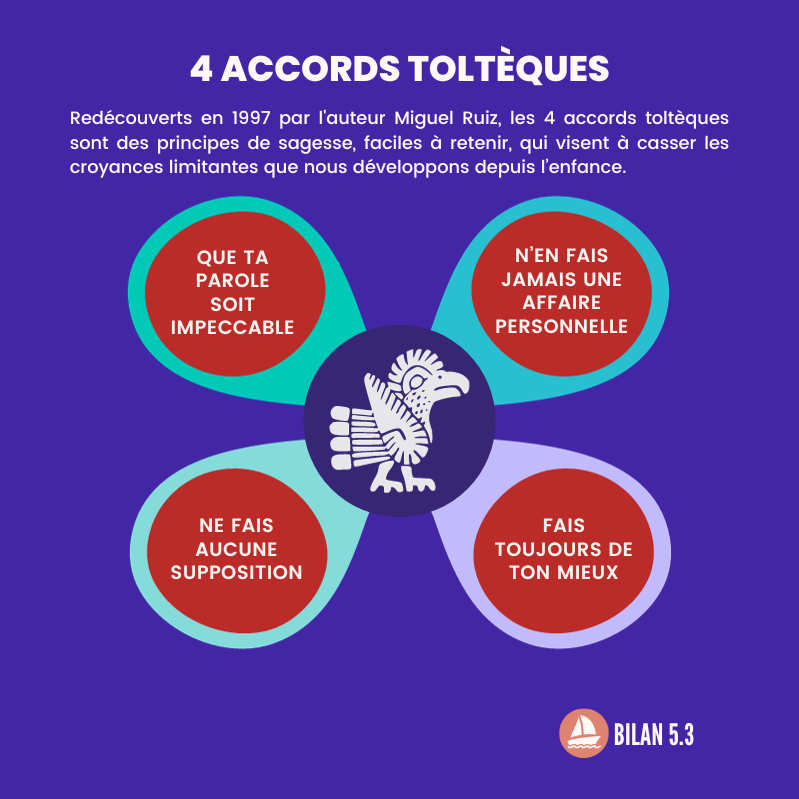Generally, the limiting beliefs appear at a very young age, then evolve gradually throughout life. Whether you experienced a painful event that made you fear experiencing a similar moment again or you are afraid of what lies ahead, limiting beliefs can prevent the formation of new positive thoughts.
Identifying the cause of your limiting beliefs is a great way to understand the thought process that generates them and begin to overcome them. By identifying them, you will probably be able to overcome them in the moment. But for long-term results, it takes time and practice.
Here is a procedure to follow in 4 steps…
1. Identify your limiting beliefs
The first step to overcoming your limiting beliefs is to identify them. By writing down these thoughts on paper, you will be able to more easily sort out fiction from reality, and realize how false they are.
This will increase your self-confidence and help alleviate the stress you associate with a particular belief. You can also ask yourself if these thoughts will have an impact in the next 10 minutes. If not, put your negative thoughts aside.
Psychologists Hugo Alberts and Lucinda Poolefrom Maastricht University in the Netherlands, have developed a 4-step exercise to identify false beliefs. These steps help you examine your preconceptions about emotions—what they mean to you, what expressing them entails, and what would change if you allowed yourself to feel fully. certain emotions.
Step 1. Choose an emotion that you have difficulty managingan emotional state that is causing you problems at the moment. This could be anxiety about an event, regrets about a recent incident, etc. Write the chosen emotion in the center on your exercise sheet.

Step 2. Look for your limiting beliefs about this emotion. Look at the list of false beliefs below and underline the ones that best reflect what you feel deeply or that seem familiar to you.
You can of course complete this list with personal beliefs:
- If I lose control of my emotions in public, I will decline in the esteem of others.
- I should be able to manage my emotions.
- If I allow myself to feel this emotion, it will overwhelm me.
- If I tell them how I feel, others will use this information against me.
- If I tell them how I feel, others will find me weak.
- Other people never feel like this: something is wrong with me.
- Only someone immature would put themselves in such a state.
- I should be able to handle difficulties alone without needing help.
- To be accepted, I have to keep negative emotions to myself.
- This emotional state is not a normal reaction, I need to get rid of it.
- A person who is comfortable in their own skin would never feel something like that.
- This person did not react like me, so my reaction is not appropriate.
- If I allow myself to feel this pain, it will tear me down.
- If I allow myself to feel bad and feel sorry for myself, I will become a wreck.
- If I show signs of weakness, others will reject me.
- Being an adult means you don’t get carried away by emotion, I’m a real kid.
- Showing my emotions to others makes me seem like an attention-seeker.
- It’s stupid to feel this way, I should keep my emotions to myself!
- I shouldn’t indulge in these feelings.
- Other…
Then report your 3 main beliefs about the emotion considered on your exercise sheet.
Step 3. Explore the consequences of these beliefs. The objective here is to study what happens because of these beliefs about your thoughts, your feelings, your behaviors, the judgment you make about yourself when you feel the emotion in question? Take back your exercise sheet and write down as many consequences (positive and negative) as you can imagine.
Step 4. Finish by evaluating the following points:
- What was your experience doing this exercise?
- Looking at the “consequences” part of the exercise, to what extent do your beliefs seem appropriate and legitimate to you?
- What did you find easy or difficult about this exercise?
- What insights have you had about your emotional beliefs?
Always ask yourself, are your thoughts justified?
It is necessary to check whether your beliefs come from a reliable source or whether they are a figment of your imagination. Analyzing your limiting beliefs can help you see them for what they really are.
The next time you have a negative belief, pause and focus on that thought. Ask yourself if it is really limiting and if it is based on objective evidence. The goal is to distinguish real facts from the ideas you have. You will see that, often, your thinking comes from fear of the unknown, from uncertainty or from a past experience.
Create positive affirmations
A good way to get rid of limiting beliefs is to use positive affirmations. These are phrases that you will repeat to yourself to build your confidence. Yes, it’s a bit like the Coué method…
It’s about transforming your limiting beliefs into positive beliefs. For example, if you tell yourself that you are not worthy of a raise, reformulate this belief by telling yourself that you work hard and that you deserve a reward for your efforts.
You will find that you can eliminate any negative thought by making it positive. Saying these positive thoughts out loud to yourself (or even to other people you trust) can help reinforce the belief in question.
An example of reformulating a limiting belief into a positive affirmation would be “I am not capable of carrying out this project successfully” which would become “I have the necessary skills to succeed in what I undertake” or “I have a very good opportunity to show my skills on this project. »
Look at the challenges that present themselves from a different perspective. Train your mind to see the positive in everyday life instead of focusing on what worries you.
Don’t give up and stay the course
Above all, don’t give up in the face of these limiting beliefs. Tell yourself that everyone has or has had them, starting with the people you admire. So, persevere to dislodge them
The important thing is to persevere to overcome the limiting belief and not allow it to make you doubt. When a limiting thought crosses your mind and slows down your intentions, always take a few minutes to push it away. Sometimes all it takes is a little breathing exercise, like 3 minutes of cardiac coherence, to bring yourself back to your senses.
Your goal is not to completely eliminate your limiting beliefs, but rather to find quick and effective ways to overcome them. By changing your perspective to focus on the positive, you will change your life.













